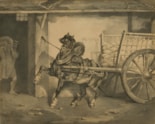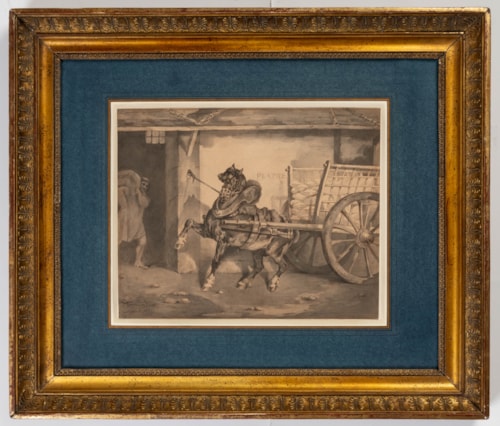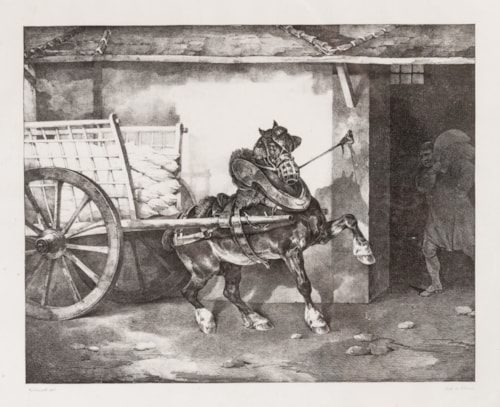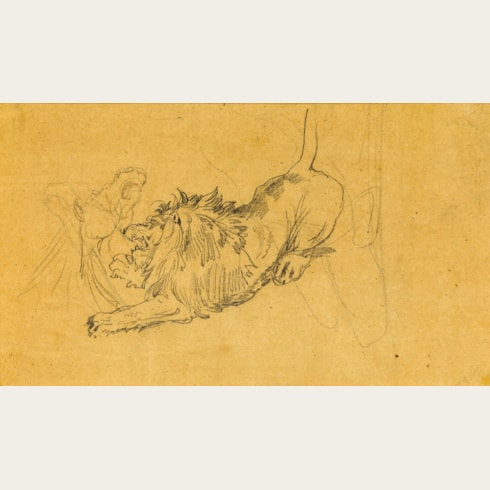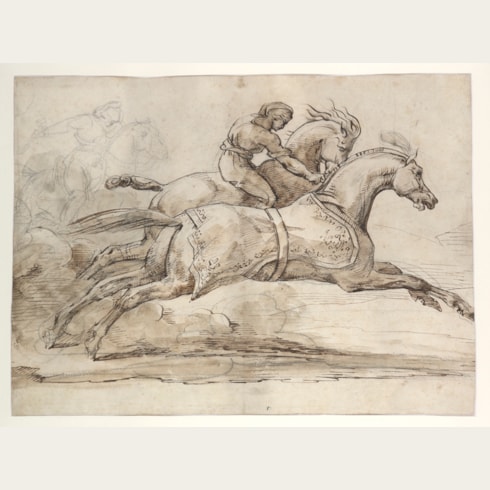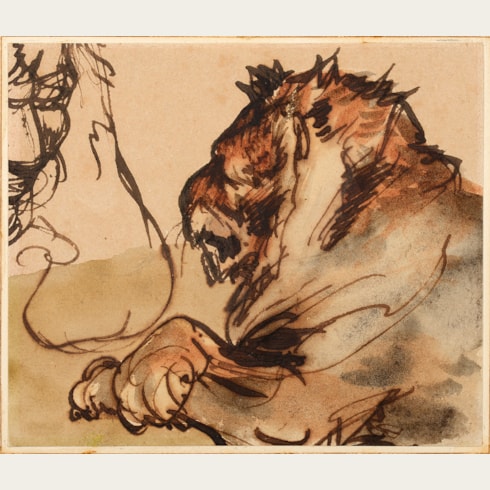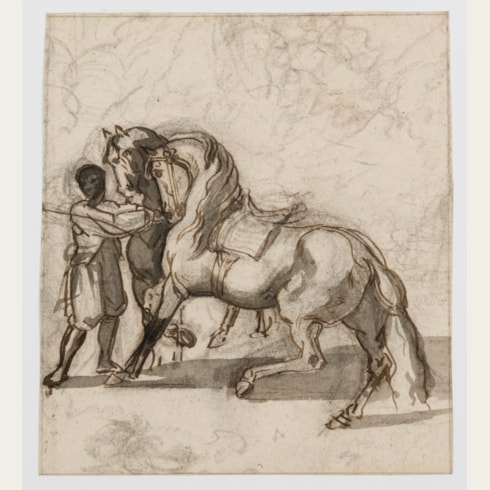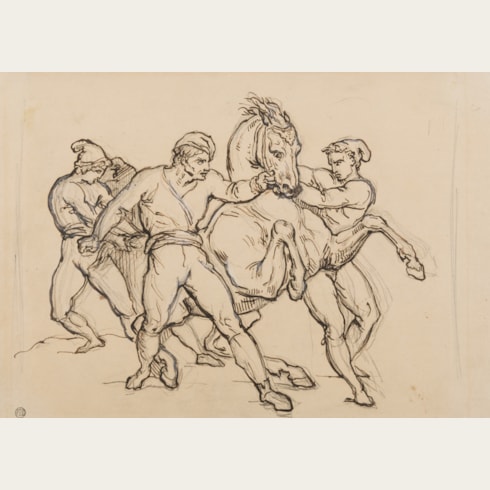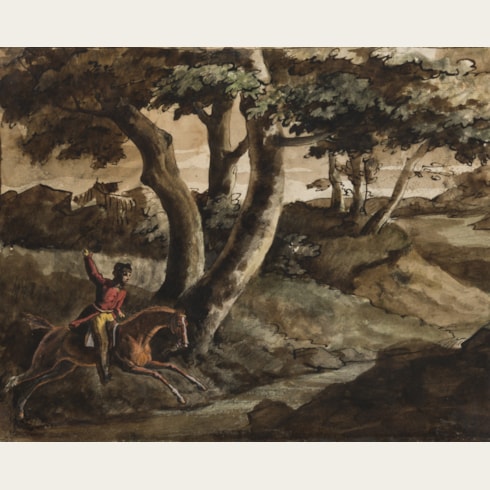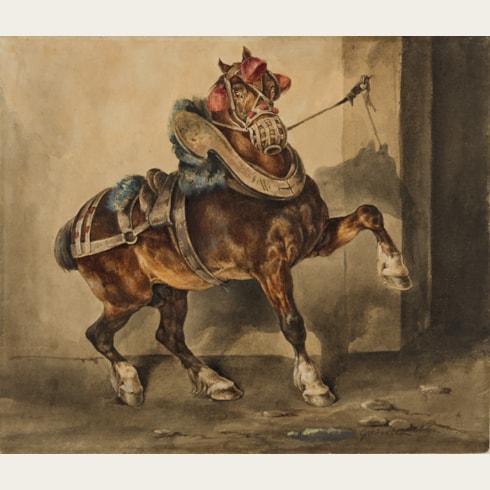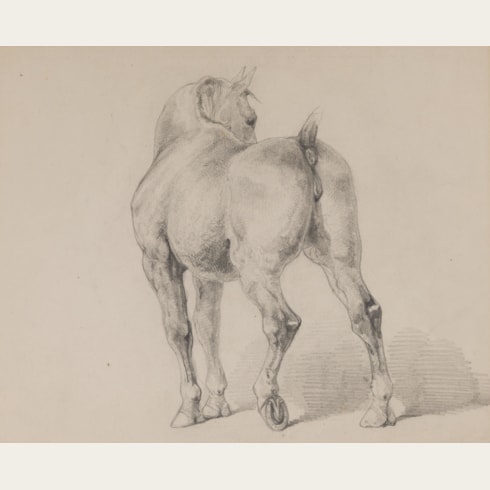Théodore GERICAULT
(Rouen 1791 - Paris 1824)
The Plaster-Maker’s Horse (Le cheval du plâtrier)
Signed and dated Gericault 1821. at the lower left.
254 x 314 mm. (10 x 12 3/8 in.)
This highly finished drawing was later used for the print Le cheval du plâtrier, one of a suite of twelve lithographs of equine subjects commissioned from Géricault by the Parisian printsellers Gihaut Frères after the artist’s return from England, where a set of lithographs after his work had met with great success. As Charles Clément, the painter’s 19th century biographer, wrote, ‘The French public had at last acquired a taste for the lithographs of Géricault; the Gihaut brothers asked him to repeat his great English suite, but they only wanted horses. Six of the subjects of this nature that had appeared in the English publication were kept, and Géricault produced watercolours to serve as models for the other six. He commissioned Messrs Léon Cogniet and Volmar to carry out all the work, directing, revising and correcting here and there.’ The series of twelve lithographs, executed in collaboration with the printmakers Joseph Simon Volmar and Léon Cogniet, were published as Études de chevaux par Gericault in April and June 1823.
In his catalogue raisonné of the work of Géricault, Germain Bazin describes the present sheet in some detail: ‘The horse is shown tied by a halter to a ring fixed to the wall. It is harnessed to the shafts of a cart with high sides loaded with bags of plaster. He wears a shoulder collar with wide splints decorated with a tuft of wool and on its head are two pompoms. He is attached to the stretchers by the belly band and a back plate, and has a breeching strap. Its tail is docked. This horse must be of a difficult character, as his eyes are bulging and he paws the ground impatiently; he is a biting horse as he wears a muzzle. His coat is black with four irregular socks. The shadow of the horse and cart falls on the wall, the rubble of which can be seen under the plaster which is peeling and which bears the inscription: PLATRE. Above the wall, we can see a roof forming an awning, supported by a bracket. In the shadow of the warehouse, where the glow of a barred window can be seen in the background, a carter wearing a smock carries a bag on his right shoulder that he is about to load onto the cart.’
A finished watercolour of this composition, which however excludes the figure carrying sacks of plaster at the left, once belonged to the Napoleonic military commander Marshal Louis-Gabriel Suchet, Duc de Albuféra, and is today in a private French collection. Although Lorenz Eitner regarded that watercolour as the model for the related lithograph by Volmar, the fact that it does not show the figure of the plaster-maker, as well as several other differences, such as the lack of stones in the foreground and the grilled window at the rear of the shed, makes this unlikely. Germain Bazin accepts the present sheet as the model for the lithograph, further noting that the bright tonality of the ex-Albuféra watercolour, which he posits may have preceded the present sheet, would have been unnecessary in the case of a preparatory drawing for a print.
A closely related painting on canvas by Géricault of this composition, of similar dimensions, is in a private collection. The popularity of the lithograph of Le cheval du plâtrier among artists has led to the existence of several copies of the composition, in oil, watercolour or black chalk, all of which are in the same direction as the print.
The first recorded owner of the present sheet was Susanna, Duchess of Hamilton (1786-1859), who may have inherited it from her father, William Beckford (1760-1844). In his day one of the wealthiest men in England, Beckford was a novelist, art critic, MP and a noted collector of paintings, furniture and decorative arts.
A fine impression of the related lithograph by Joseph Volmar (Delteil 86), for the series Études de chevaux of 1823, is sold with the present sheet.
Provenance
Possibly William Beckford, London and Bath (according to the 1967 Ewan Phillips Gallery catalogue)
By descent to his daughter, Susanna Euphemia Beckford Hamilton, Duchess of Hamilton, Brodick Castle, Isle of Arran
Thence by descent to Lady Jean Graham Sibyl Violet Fforde, Edinburgh
Ewan Phillips Gallery, London, in 1967
Paul Brame, Paris.
Literature
Exhibition


